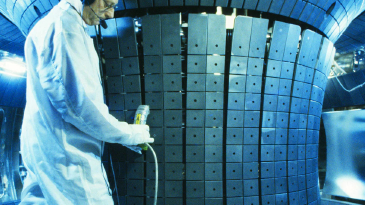Process industry executives are accustomed to the cyclical nature of the energy and chemicals businesses. Profits are impacted by the boom and bust of supply and demand, as well as by fluctuations in raw material costs. It’s one of the main reasons executives have consistently focused on operational excellence — it gives them a measure of control in all market environments.
In high-profit times, operational excellence maximizes revenue, enabling mergers and acquisitions (M&A) and business expansion that create reserves to ride out future lulls. In lean times, operational excellence provides the efficiency that preserves profit margins and helps hit cash flow targets through reduced overhead. As a result, executives have been able to confidently fund core operations and keep the enterprise solvent ahead of the next growth wave.
There is growing evidence that the global macroeconomic environment has fundamentally changed and cycles are more volatile. Consider the following in the energy industry:
-
Costs for extraction, processing and baseline operations are expected to steadily increase.
-
Investors are demanding certain returns regardless of external conditions.
-
M&A activity is increasing to boost profitability as a hedge against market fluctuations.
-
Mergers are expected to drive immediate impact, pushing acquirers to standardize and optimize operations faster than ever to accelerate deal value creation in much shorter time frames.
Add it all up and the idea of “lower for longer” — where abundant supply, uncertain demand and rising costs pressure profits — could be underselling the reality in the oil industry. The market likely has transitioned into a “lower forever” mode, where profit growth will continue to be difficult. If so, where can executives look for relief? Much of the design efficiencies and cost reductions available have already been realized or identified across complex, capital-intensive industries like oil, gas and chemicals. Operations is seeing less than 1 percent in incremental savings year over year due to historical gains already realized.
That leaves asset reliability and maintenance as the next logical area to address. Maintenance has historically been considered a cost center, not a value driver. This is changing as big data technologies, analytics and machine learning make predictive and prescriptive asset maintenance a reality, driving significant improvements in reliability.
Reducing maintenance costs, avoiding emergency and unplanned shutdowns and successfully managing unpredictable feed and demands through technology can help companies on the path to sustained profitability. We call it the “science of maintenance,” where historical and real-time operational data feeds algorithms that model failure precursors across all assets and systems. This enables truly accurate, proactive identification of asset vulnerabilities in near real time. The resulting refined set of recommendations drive action at a system and individual asset level that maximizes uptime and performance, and improves reliability.
This is welcome news for industry executives, and provides a focus for expanding operational excellence efforts. The unexpected benefit is that the big data and analytics methods used to improve asset performance and maintenance can be applied to operations as well. Operations efficiency has historically been addressed in the past through enterprise software that didn’t include advanced analytics or big data strategies. With advanced Asset Performance Management, executives can leverage new technology and existing data to recast operational plans and expectations, weaving operational, design and asset-level data together into one model.
Executives will be able to see how changes at any level of operations or assets will affect output and profit. Through big data and analytics, executives can compare site or plant performance vs. others in their system. This will enable proactive identification of areas of underperformance that requires improvement, and can even roll up disparate sites into one larger model. For C-level executives, it means a complete picture of their plant, site or system performance, enabling more confident risk analysis and projections of process and performance to the board level.
If “lower forever” is a reality, leveraging big data and analytics technologies across design, operations and maintenance will help executives proactively reduce OPEX and more confidently drive profits.
Discover how companies can drive significant improvements in reliability and achieve sustained profitability in my recent executive brief, “The Time is Right for Optimum Reliability: Capital-Intensive Industries and Asset Performance Management.”





Leave A Comment